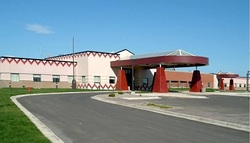
In 1897 the Butte Electric Railway Company pulled up the streetcar tracks that went to Columbia Gardens. William Andrews Clark, a “copper king” of Butte, owned the Butte Electric Railway Company, which provided the only transit line to the Gardens. Adams advertised that his venue was “the most attractive pleasure resort in the environs of Butte,” where food and drink was available, and where “pleasure seekers” could enjoy a “pleasant drive and the cooling shades of the Garden.” It is not clear when precisely Adams added “Gardens” to the name of his land, but the name remained the same for the entire life of the entertainment grounds.Īdams’s operation became a peripheral space for the people of the infant city to entertain themselves on outings and picnics, or at races or performances, while bars, brothels, and theaters provided entertainment in the central business district. But, by the late 1890s it had become a problem drunkenness and violence were common at the resort. The first advertisement for Columbia Gardens appeared on June 29, 1884.

When mining proved unprofitable, Adams began hosting outings on his property. It would require large scale mining, and huge investments of both capital and manpower, to make copper mining in Butte viable.

In 1876 a miner named Walter William Adams made a claim east of Butte in Horse Canyon, which he named “Columbia.” As was the case with many small mining operations in the area during the 1870s, Adams could not make a living off of his claim because the copper’s purity was low. In truth, the Columbia Gardens and the Berkeley Pit are simply the most obvious examples of how people have reimagined the purpose of the city of Butte, the land, and the environment over the last 150 years. The story is simple at first glance: a copper king, William Andrews Clark, gave the city its crown jewel, and a copper company, Anaconda, took it away. Many residents’ fondest memories of the city are from Columbia Gardens, a pleasure garden lost in 1973 to the whims of the mining industry, then fire, and, finally, the Pit.

īut, for the people of Butte the city means much more than its waste. And it is part of a longer chain of Superfund sites stretching 140 miles from Butte to Missoula, Montana, all resulting from mining activity in the nineteenth and twentieth centuries. It is only one small corner of the 26-mile-long Superfund site that stretches from I-15 in Butte to Warm Springs, Montana. The Pit swallowed up entire neighborhoods: Meaderville, parts of Centerville, and the beloved Columbia Gardens. A toxic lake a mile wide and a half-mile deep, it is an unignorable reminder that mining built the city-but also destroyed it. The Berkeley Pit is the mascot of Superfund in Butte. It is part of one of the largest of such sites in the United States, known as “Superfunds” on the Environmental Protection Agency’s National Priority List. Additional entries can be seen at the end of this article.īutte, Montana, is currently known for its biggest eyesore and toxic waste site: the Berkeley Pit. Institutions may review their grant records and request updates.ĪLLIANCE OF WOUND CARE STAKEHOLDERS, INC.E ditor’s note: This is the eight and final post in our theme for January 2022, Urban Environmentalism. Upon completion of each fiscal year, research and development contract records are integrated with frozen grant records and posted in December. įor consistency in reporting on past fiscal years, this site uses frozen information for past fiscal years, and this may differ from current information displayed on RePORTER. For a list of those projects, please visit. These data do not include projects funded by the American Recovery and Reinvestment Act of 2009. As a result, every year there may have been a small number of organizations that received NIH funding but appear in this table as having "0" (zero) awards.

Prior to 2011, NIH reported the dollar amount of administrative supplements but, because they are supplements to existing projects, did not count these supplements as "awards". NIH's use of multiple principal investigator awards makes calculations of the total funding received by individual departments impractical and there are multiple ways in which the funding data can be aggregated across universities' schools and departments that can alter the ordering of institutions. Note: Although this list can be sorted by the amount of funding each organization receives, these data should not be interpreted as a ranking of institutions by NIH.


 0 kommentar(er)
0 kommentar(er)
